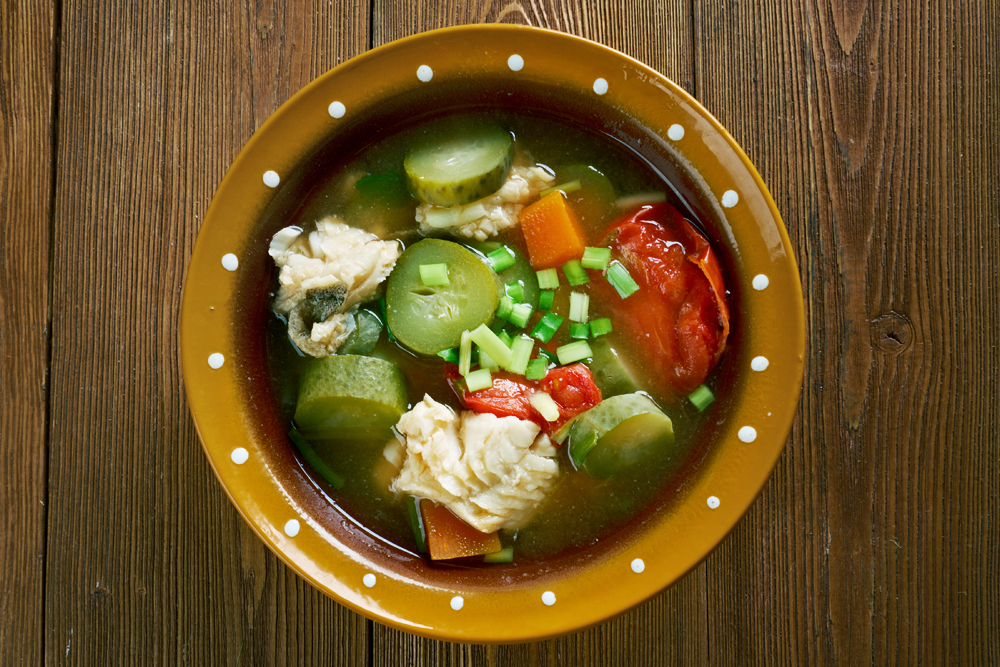
Kalya: this soup isn't the most extreme traditional dish yet it was one of the most expensive.
Vostock-PhotoKalya was a very expensive dish and was served on holidays only. Those who prepared it well had their own name — kaleyshchiks.
1. Chop the fresh vegetables and boil them in water
2. Add boiled pickle juice.
3. Chop fish and pickles, add to the broth.
4. Boil 8-15 min (depending on the kind of fish).
5. Add spices and lemon juice.
Nyanya consists of a bag made from sheep’s rennet stuffed with a mixture of boiled buckwheat and minced mutton trotters, head meat and brains. This dish stands apart on the ancient Russian menu, and not just because of its ingredients: it was banned by the Russian Orthodox church because of its sacred value for the pagan Slavs. Nyanya has been known since the times of ancient Rus’; the first mentions of the dish date back to the 9th century.
The main purpose of the dish was to utilize all the meat of a butchered animal. It was prepared mainly in the late summer and early fall when sheep were slaughtered. In Nikolai Gogol’s classic novel Dead Souls, the squire Sobakevich serves nyanya to the main character, Chichikov. Traditionally nyanya was cooked in an earthenware pot and had to be simmered for several hours.
1. Boil the mutton meat (traditionally trotters, head meat and brains, but if this is too extreme, any part of the meat will do).
2. Boil the buckwheat (it shouldn’t be soft).
3. Mince the meat with onions, add buckwheat and butter.
4. Scrape out the rennet bag, wash it, put the minced meat inside. Sew it up.
5. Put in a warm oven for 2-3 hours.
Unlike kalya, tyurya is a really cheap and extremely easy to cook dish that was the go-to dish for poor people until the 19th century. Tyurya is a kvass-based vegetable soup that simply requires all the ingredients to be combined, which makes it quick to prepare. Most any root vegetables can be added to tyurya, and it’s also a good option for Lent. When making tyurya, white kvass is preferable. Radishes were traditionally used in tyurya since the radish was greatly valued in ancient Rus’ due to its health benefits.
1. Grate the radish.
2. Dice the onions.
3. Mix together, cover with kvass, add oil. Serve with bread.
All rights reserved by Rossiyskaya Gazeta.
Subscribe
to our newsletter!
Get the week's best stories straight to your inbox